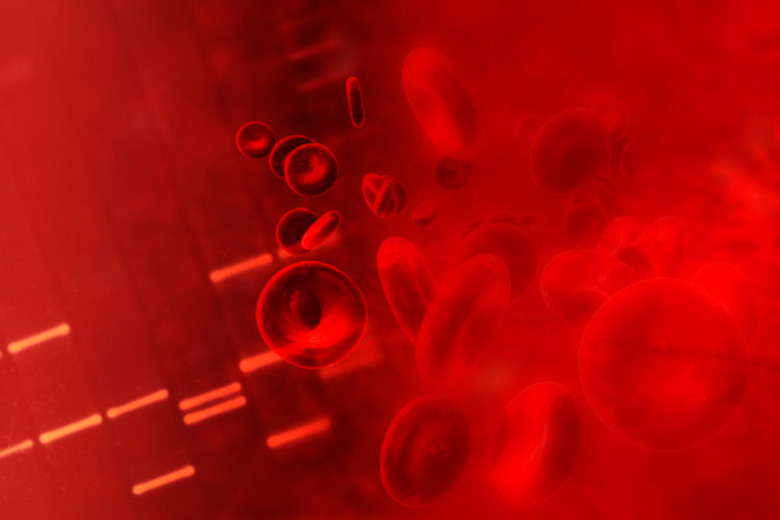What Are The Six Human Life Processes?
If visiting a different planet, how could an explorer decide if something was alive or not? Based on the Earth's experience, all living things share certain characteristics. If an object lacks one or more of those characteristics, that object isn't alive. Life processes in human beings mirror the life processes of all other life forms, and there are six life processes that cover birth to death.
TL;DR (Too Long; Didn't Read)
The six human life processes are: growth and development, movement and responding to stimuli, order and organization, reproduction and heredity, energy utilization and homeostasis. These processes may be grouped or labeled differently, depending on the source.
Growth and Development
Growth and Development
All living things, including humans, grow and develop in the patterns determined by their DNA. Growth occurs because cells grow larger or because cells increase in numbers. In higher life forms like humans, as the cells multiply, they also change or differentiate. For example, some cells become skin cells while others become bone, muscle or other specialized cells.
Movement and Responding to Stimuli
Movement and Responding to Stimuli
Living things move, especially in response or reaction to environmental stimuli. In humans, movement ranges from the twitch of an eyebrow or finger to breathing and the flow of blood cells to walking and running. Responding to cold might mean putting on a coat, hat and gloves. Responding to heat might mean drinking a glass of water and turning on a fan or air conditioner.
Order and Organization
Order and Organization
Except for the simplest of bacteria, the cells of living organisms are internally organized. In more complex organisms, from jellyfish to humans, cells also have specialized functions. Specialized cells are organized into tissues, tissues form organs, organs form organ systems and the combined organ systems form the organism.
Reproduction and Heredity
Reproduction and Heredity
Reproduction in humans occurs in two different ways. In the first, cells reproduce through mitosis so that the organism can grow or so the cells can replace themselves. The DNA information contained in each cell provides the instructions for this reproduction.
The second, more specialized form of reproduction results in the formation of a new organism like a baby. In more complex life forms, meiosis divides special cells into egg or sperm, the so-called sex cells, each containing only half of the DNA required for a new version of the organism. When an egg and sperm combine their DNA, the new combination of DNA results in a new and usually genetically unique individual. Although less common in humans than many other organisms, sometimes the fertilized egg divides into two or more individuals with the same genetic information, developing into identical twins or, very rarely, identical triplets or quadruplets.
Heredity means that reproduction also passes traits to the next generation through genes. These structures within the DNA carry the codes for height, hair and eye color, bone structure and so on. In the wild, advantageous traits that aid survival are more likely to be passed on to the next generation. Humans pass traits from generation to generation as well, but the human ability to manipulate the environment reduces the influence of traits on survival and reproduction.
Energy Utilization
Energy Utilization
All living things use energy. In humans and other animals, energy use requires breathing and eating. Energy processes in the human body include respiration, digestion and excretion of wastes. Metabolism includes all these processes. Two of the chemicals and chemical processes that are most important to human life are oxygen, required for cellular respiration, and glucose, a form of sugar that releases energy during cellular respiration.
Inhaling oxygen and exhaling carbon dioxide signal one of the most important chemical processes to human life: cellular respiration. Oxygen-rich air enters the lungs. Oxygen diffuses into the bloodstream and is carried to cells. After entering the cell, the oxygen becomes part of the chemical reaction that releases energy from glucose. Cellular respiration breaks the glucose, resulting in the end products water and carbon dioxide. Carbon dioxide and excess water diffuse back to the bloodstream. Carbon dioxide is released back into the lungs and exhaled. Excess water may be eliminated through sweat, urine or feces.
Digestion breaks down the more complex proteins, carbohydrates and other foods. Once the ingested food is reduced or converted to simpler glucose molecules, these molecules can be carried by the bloodstream to cells for cellular respiration or for storage.
Homeostasis
Homeostasis
Homeostasis means that organisms control their internal environment. Homeostasis allows an organism to respond to external environmental conditions in ways that maintain internal conditions. When external changes exceed an organism's ability to adjust or compensate, the organism dies.
Humans depend on homeostasis to stay healthy. Humans are warm-blooded, which means that internal mechanisms exist to maintain internal body temperature. Shivering when cold is one of those mechanisms while sweating when hot is another mechanism for homeostasis. The layer of fat under the skin, another adaptation for homeostasis, insulates to help maintain body temperature while also providing storage space. Fat serves as concentrated energy storage. Other mammals like bears and whales have thicker layers of fat because of their greater need for insulation and stored energy.
How Many Life Processes in Human Beings?
How Many Life Processes in Human Beings?
Different sources organize their lists of life processes in different ways. Some lists show four processes while others show as many as 10. The same life processes appear on all the lists, only they're sometimes grouped and labeled differently.
References
Cite This Article
MLA
Blaettler, Karen G. "What Are The Six Human Life Processes?" sciencing.com, https://www.sciencing.com/six-human-life-processes-8493609/. 24 August 2018.
APA
Blaettler, Karen G. (2018, August 24). What Are The Six Human Life Processes?. sciencing.com. Retrieved from https://www.sciencing.com/six-human-life-processes-8493609/
Chicago
Blaettler, Karen G. What Are The Six Human Life Processes? last modified March 24, 2022. https://www.sciencing.com/six-human-life-processes-8493609/
